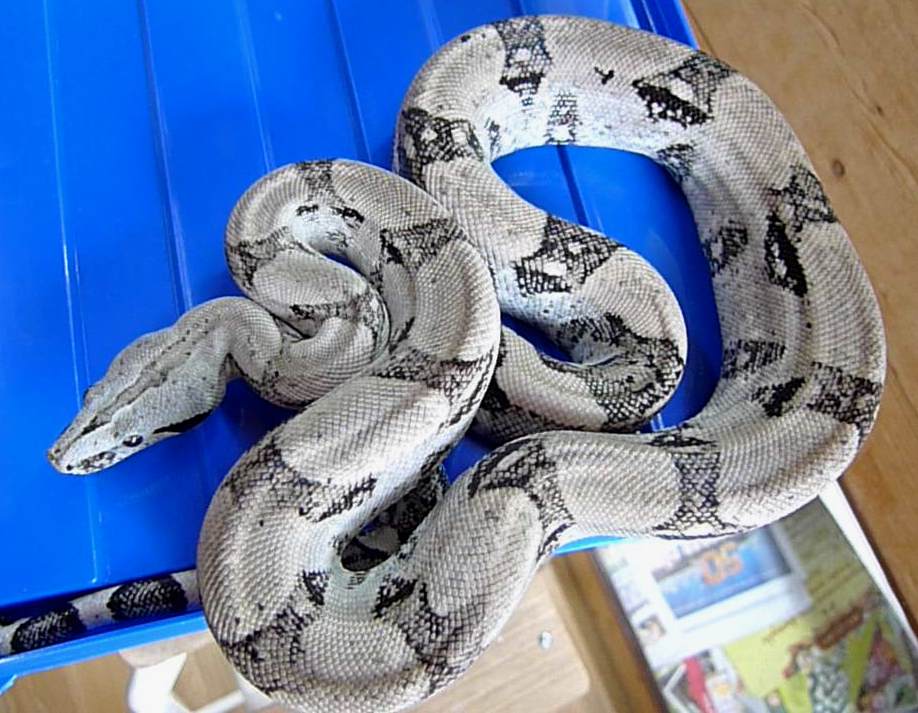
In Sonora Desert boas the hypomelanistic mutation results in a blonde/orange body coloration and a rust-colored tail. The blotches at the tip of the tail are typically outlined in black.
The saddles are typically a deep red brown outlined in a dark brown. In Nicaraguan boas the hypomelanistic mutation results in intense red/orange body and tail coloration with random black flecking. Other forms of hypomelanism have occurred spontaneously in other Boa constrictor imperator localities. These two lines of hypomelanistic boas are compatible and thus most boas on the market are a mix of the two. Mainland Panama hypomelanistic boas typically have slightly shorter heads and smaller eyes. He named this trait Orange Tail Hypomelanistic, it is distinguished from the salmon line due to the increased oranges and their slightly elongated heads. The second originates from Panama boas and was started by Jeff Gee. They were selectively bred to create the Salmon line which has more reds and browns than a wild type. This cross produces seven light orange boas that were purchased by Richard Ihle. The first originating from a cross between a wild hypomelanistic Panama boa and a Colombian boa. There are several hypomelanistic mutations. Heterozygous hypos usually maintain the typical wildtype patterns and have some black flecking throughout their bodies. The heterozygote will express proteins for each allele and can be considered an intermediate phenotype between wild and “super hypo”. When the animal is heterozygous meaning it carries one mutated allele and one normal allele then a completely different phenotype is expressed. The super form has reduced pattern and has very little black pigmentation.

The homologous form of the mutation is expressed when the boa has two homologous alleles of the mutated gene, this is referred to as the “super” form. This mutation is incomplete dominant and can be found in both Central and South American boas. The Hypomelanistic mutation causes a drastic reduction in black pigmentation resulting from dysfunctional melanophores.


 0 kommentar(er)
0 kommentar(er)
